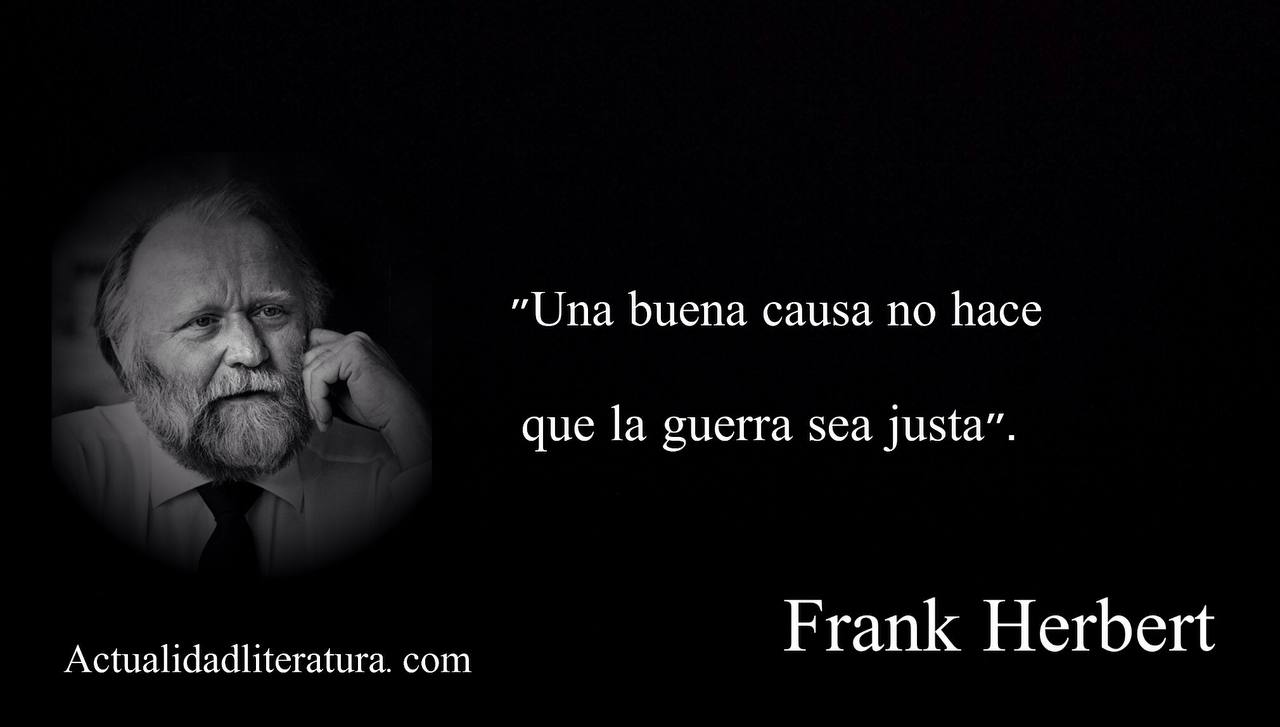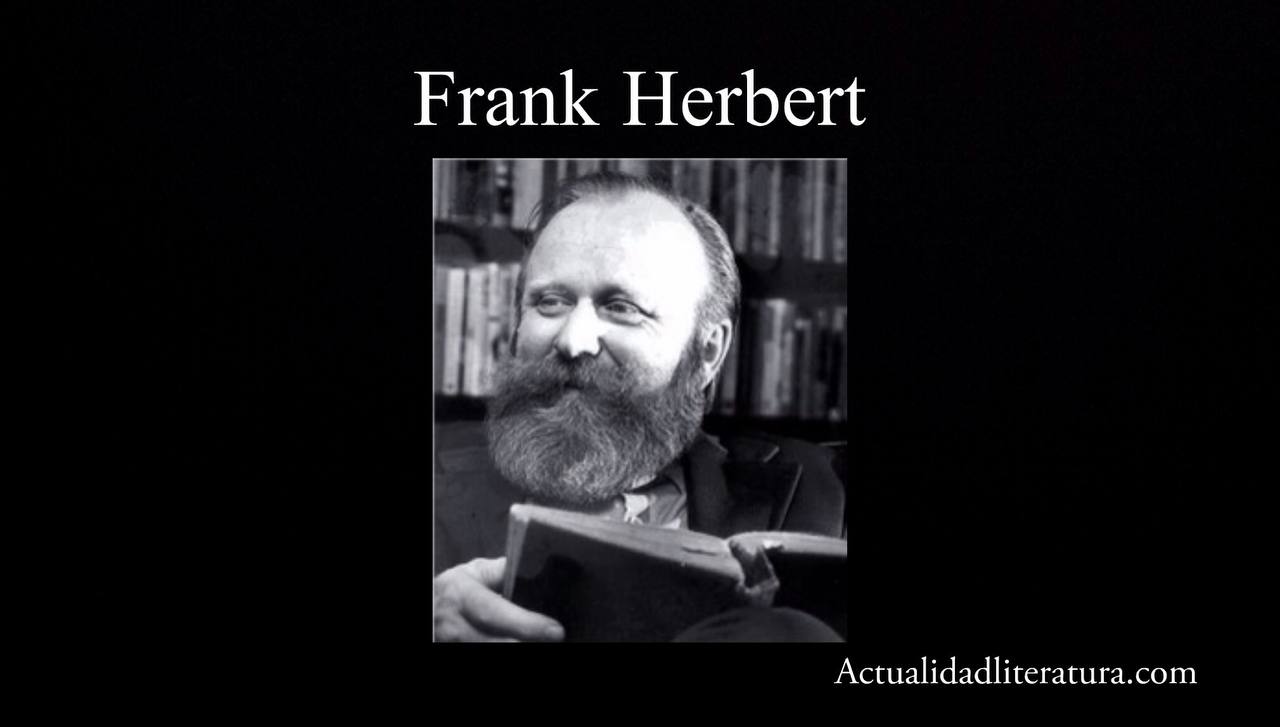
“It is perhaps the greatest novel within the canon of science fiction”, as Hari Kuzru defined it. The Guardian (2015) to Dune, (1965). Certainly the brainchild of Franz Herbert is the best-known franchise of all time. Moreover, his relevance and influence on contemporary culture is evident in later legendary sagas such as Star Wars o Trip to the stars, For example.
The work of the American writer has given rise to a vast universe represented in feature films, television series, comics, video games and card games, among others. Part of its magnitude is due to the contributions of other authors authorized by Herbert from 1984. These contributions added more details to the "Dunian cosmos" that were not in the original novels.
Analysis and synopsis of the universe of Dune,
Context
In 1957, the American journalist, photographer and writer became interested for the successful planting of European grass in the dunes of the Oregon coast. This initiative, completed by the US Department of Agriculture, led him to to write "They Stopped the Moving Sands" ( "They stopped the quicksand").
Although he never published the aforementioned story, Herbert continued to develop the idea of a desert world plagued by moving mounds caused by environmental destruction. In 1963, the Washingtonian author completed the manuscript of Dune World and the magazine Analog published it in serial form (December 1963 – February 1964).
Publication and first prizes
The manuscript was rejected by twenty-two publishers, who justified their decision on the supposed complexity of the plot. However, in 1965 Chilton Books opted for its launch in novel format. The title won the prestigious 1965 Nebula Award and shared with Immortal of Roger Zelazny the Hugo Award of 1966.
Themes
The panorama of the American West next to Herbert's experiences with Native American peoples shaped the political vision of Dune, . In fact, the writer learned to fish with techniques from the Hoh ethnic group during his youth. Also, from 1960 the novelist was an activist against war and nuclear weapons, along with his position in favor of the establishment of Earth Day.
Likewise, Herbert deeply investigated desert ecosystems and the environmental impact of human action in order to describe the interaction of man with his environment. In this way, literary analysts point to an obvious influence of encyclopedias on modern ecology (The Sociology of Nature) and historical psychology (The Changing Nature of Man).
Other themes addressed in the novels of Dune,
- The decline of empires
- Heroism
- Islamic and Middle Eastern influences
- Religion and spirituality
Sequels written by Herbert and audiovisual adaptations
Franz Herbert published five sequels: Dune Messiah (1969) Children of Dunes (1976) God, Emperor of Dune (1981) Heretics of dune (1984) and Chapterhouse: Dune (1985) Thanks to them, Herbert was inducted into the Science Fiction Hall of Fame in 2006.. Not in vain, the saga was adapted to the big screen twice (1984 and 2021) and to multiple award-winning series.
After the death of Franz Herbert in 1986, his son Brian and Kevin J. Anderson relied on unfinished manuscripts by the writer to put together the prequel trilogy of Dune, . Another trilogy was then released depicting "humankind's crusade against computers, thinking machines, and sentient robots" (10.000 years before the events of the first book).
First trilogy by Brian Herbert and Kevin J. Anderson
- Dunes: House Atreides (1999)
- Dune: House Harkonnen (2000)
- Dune: House Corrino (2002)
Second trilogy by Brian Herbert and Kevin J. Anderson (Legends of Dunes)
- Dune: The Butlerian Jihad (2002)
- Dune: The Machine Crusade (2003)
- Dune: The Battle of Corrin (2004)
Other later publications signed by Herbert and Anderson
- Hunters of Dune (2006)
- Sandworms of Dune (2007)
- SeriesHeroes of Dune:
- Paul of Dune (2008)
- The Winds of Dune (2009)
- Sisterhood of Dune (2012)
- Mentats of Dune (2014)
- Navigators of Dune (2016)
- SeriesThe Caladan Trilogy:
- Dune: The Duke of Caladan (2020)
- Dune: The Heir of Caladan (2021)
Synopsis of the book Dune, (1965)
Dune, It is set in the very distant future. The novel describes the internal confrontations of an intergalactic feudal empire controlled by Noble houses, which, in turn, pay homage to the Imperial House Corrino. The protagonist is Paul Atreides, a young heir to Duke Leto Atreides I and the future head of the house that bears his surname.
When Paul and his family move to the planet Arrakis —unique in the universe with a source of spices—, he checks the complex political interactions that exist. Religious and ecological issues are also present, as well as the social impact of technological advances. In this context, the genesis of the conflicts that will change the destiny of humanity takes place.
Other houses and characters involved
- The natives of Arrakis
- The Padishah Emperor
- The mighty Space Guild
- The Bene Gesserit Order, a secret women's organization.
Biographical synthesis of the author

Birth, childhood and youth
A native of Tacoma, Washington, USA, Frank Patrick Herbert Jr. was born on October 8, 1920. He grew up in a rural setting with his parents, Frank Patrick Herbert Sr. and Eileen McCarthy. From an early age he showed what his two great passions in life would be: reading and photography.
Poverty severely affected the Herbert family during the Great Depression. For this reason, in 1938 he moved to Salem, Oregon, with an aunt. There, He graduated from North Salem High School and got his first jobs—mostly as a photographer. in the newspaper Oregon Stateman (current Statesman Journal).
Weddings
The future novelist was married between 1941 and 1943 with Flora Lillian Parkinson, mother of his firstborn, Penelope. Then she got married in 1946 with Beverly Ann Stuart—until her death in 1983—, with whom he had two sons: Brian Patrick and Bruce Calvin. Finally, Theresa D. Shackelford was the last wife of Herbert between 1985 and 1986, year of the writer's death.
Participation in the war and first written publications
Frank Herbert. worked as a photographer for the unit Seabees US naval force during World War II. This work was for a period of six months (he was discharged due to head trauma). Later, he settled in Portland, Oregon, where he worked in The Oregon Journal and began his studies (never completed) at the University of Washington.
Other print media for which he worked
In 1952, Herbert sold his first science fiction story, "looking for something, to the magazine Starting Stories. In the meantime, he held various positions—from photographer and writer to editor—at the following newspapers and magazines: Seattle Post-Intelligencer (1945 – 1946), Tacoma Times (1947) Santa Rosa Press Democrat (1949–1955) and San francisco examiner (1960–1966), among others.
